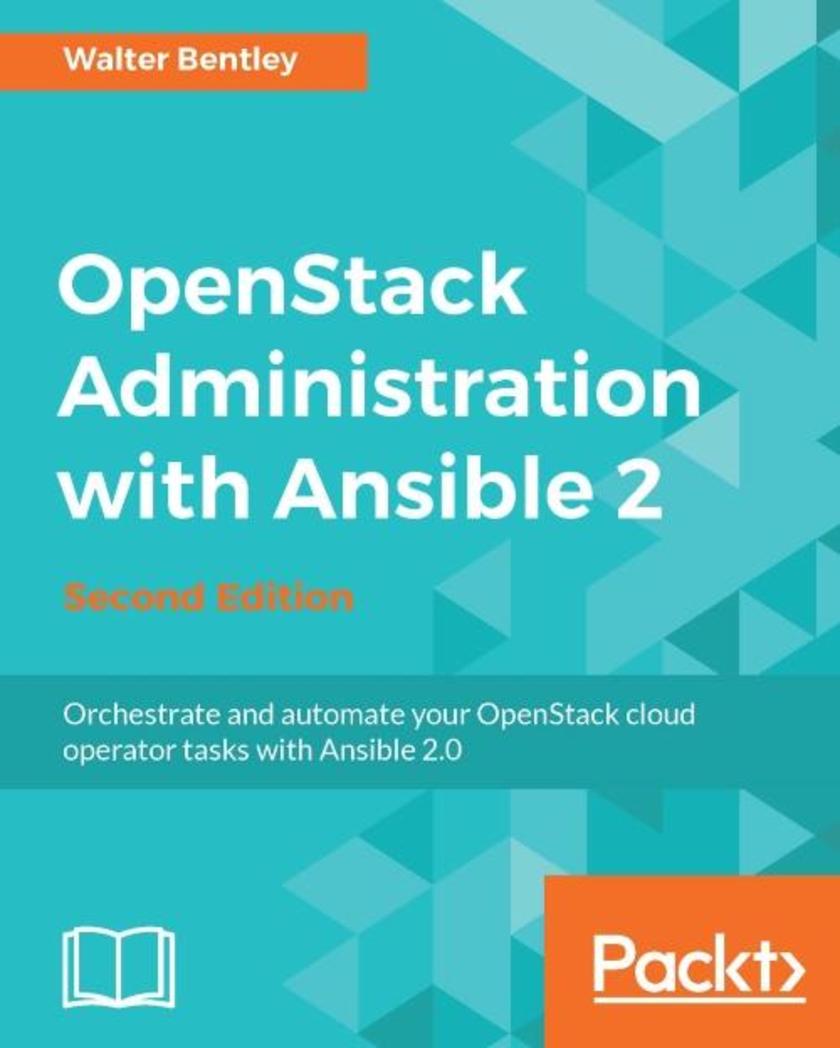
OpenStack Administration with Ansible 2 - Second Edition
¥71.93
Orchestrate and automate your OpenStack cloud operator tasks with Ansible 2.0 About This Book Automate real-world OpenStack cloud operator administrative tasks Construct a collection of the latest automation code to save time on managing your OpenStack cloud Manage containers on your cloud and check the health of your cloud using Nagios Who This Book Is For This book is aimed at OpenStack-based cloud operators and infrastructure and sys administrators who have some knowledge of OpenStack and are seeking to automate taxing and manual tasks. This book is also for people new to automating cloud operations in general and the DevOps practice in particular. What You Will Learn Efficiently execute OpenStack administrative tasks Familiarize yourself with how Ansible 2 works and assess the defined best practices Create Ansible 2 playbooks and roles Automate tasks to customize your OpenStack cloud Review OpenStack automation considerations when automating administrative tasks Examine and automate advanced OpenStack tasks and designated use cases Get a high-level overview of OpenStack and current production-ready projects Explore OpenStack CLI tools and learn how to use them In Detail Most organizations are seeking methods to improve business agility because they have realized just having a cloud is not enough. Being able to improve application deployments, reduce infrastructure downtime, and eliminate daily manual tasks can only be accomplished through some sort of automation. We start with a brief overview of OpenStack and Ansible 2 and highlight some best practices. Each chapter will provide an introduction to handling various Cloud Operator administration tasks such as managing containers within your cloud; setting up/utilizing open source packages for monitoring; creating multiple users/tenants; taking instance snapshots; and customizing your cloud to run multiple active regions. Each chapter will also supply a step-by-step tutorial on how to automate these tasks with Ansible 2. Packed with real-world OpenStack administrative tasks, this book will walk you through working examples and explain how these tasks can be automated using one of the most popular open source automation tools on the market today. Style and approach This book is a concise, fast-paced guide filled with real-world scenarios that will execute OpenStack administrative tasks efficiently. It serves as a quick reference guide for not just OpenStack functions, but also for creating future Ansible code.
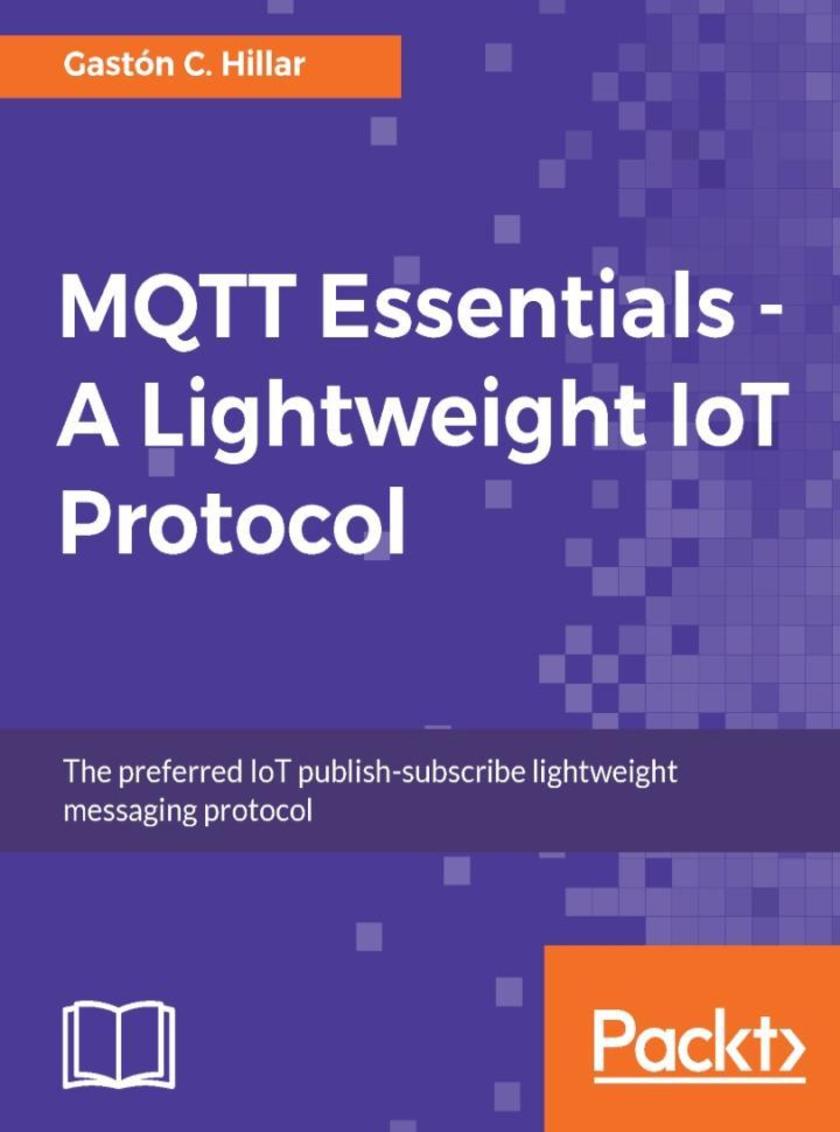
MQTT Essentials - A Lightweight IoT Protocol
¥71.93
This step-by-step guide will help you gain a deep understanding of the lightweight MQTT protocol. We’ll begin with the specific vocabulary of MQTT and its working modes, followed by installing a Mosquitto MQTT broker. Then, you will use best practices to secure the MQTT Mosquitto broker to ensure that only authorized clients are able to publish and receive messages. Once you have secured the broker with the appropriate configuration, you will develop a solution that controls a drone with Python. Further on, you will use Python on a Raspberry Pi 3 board to process commands and Python on Intel Boards (Joule, Edison and Galileo). You will then connect to the MQTT broker, subscribe to topics, send messages, and receive messages in Python. You will also develop a solution that interacts with sensors in Java by working with MQTT messages. Moving forward, you will work with an asynchronous API with callbacks to make the sensors interact with MQTT messages. Following the same process, you will develop an iOS app with Swift 3, build a website that uses WebSockets to connect to the MQTT broker, and control home automation devices with HTML5, JavaScript code, Node.js and MQTT messages What you will learn ?Understand how MQTTv3.1 and v3.1.1 works in detail ?Install and secure a Mosquitto MQTT broker by following best practices ?Design and develop IoT solutions combined with mobile and web apps that use MQTT messages to communicate ?Explore the features included in MQTT for IoT and Machine-to-Machine communications ?Publish and receive MQTT messages with Python, Java, Swift, JavaScript, and Node.js ?Implement the security best practices while setting up the MQTT Mosquitto broker
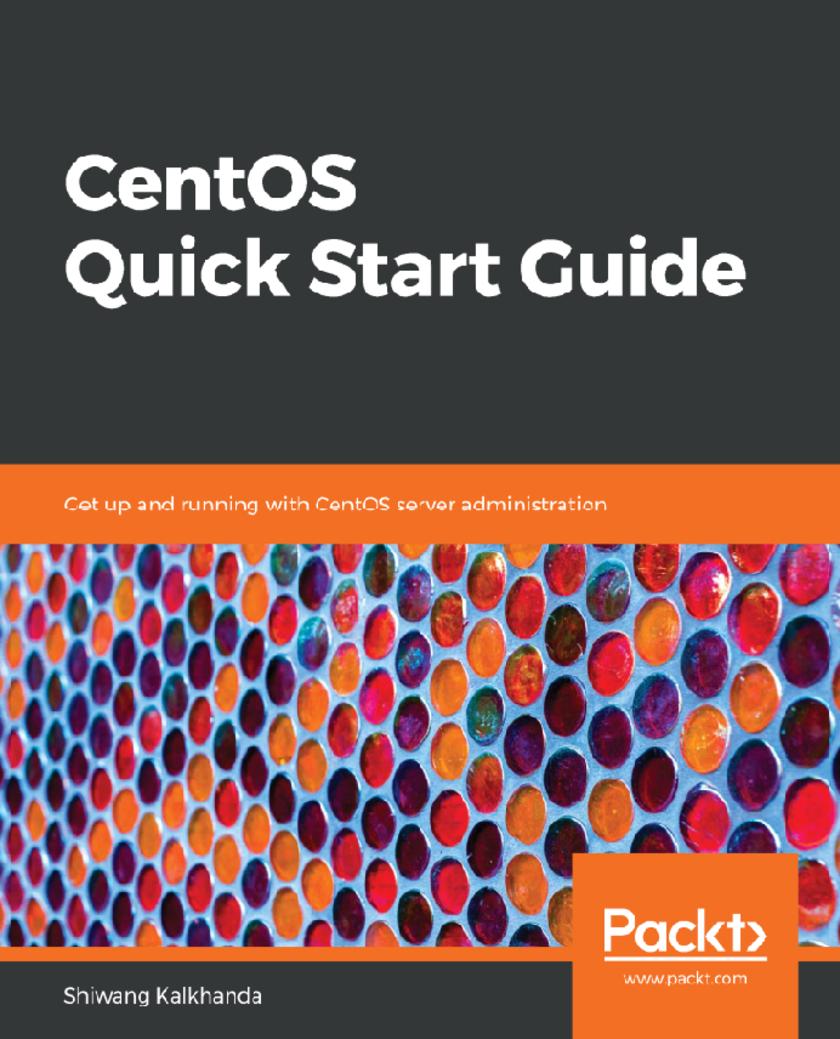
CentOS Quick Start Guide
¥71.93
A concise walk-through of CentOS 7, starting from installation to securing it’s environment. Key Features *No previous Linux environment experience needed for reading this book *Get comfortable with a popular and stable Red Hat Enterprise Linux distribution *Most of the command line based concepts are explained with graphics Book Description Linux kernel development has been the worlds largest collaborative project to date. With this practical guide, you will learn Linux through one of its most popular and stable distributions. This book will introduce you to essential Linux skills using CentOS 7. It describes how a Linux system is organized, and will introduce you to key command-line concepts you can practice on your own. It will guide you in performing basic system administration tasks and day-to-day operations in a Linux environment. You will learn core system administration skills for managing a system running CentOS 7 or a similar operating system, such as RHEL 7, Scientific Linux, and Oracle Linux. You will be able to perform installation, establish network connectivity and user and process management, modify file permissions, manage text files using the command line, and implement basic security administration after covering this book. By the end of this book, you will have a solid understanding of working with Linux using the command line. What you will learn *Understand file system hierarchy and essential command-line skills *Use Vi editor, I/O redirections and how to work with common text manipulating tools *Create, delete, modify user accounts and manage passwords and their aging policy *Manage file ownership, permissions, and ACL *Execute process management and monitoring on the command line *Validate and manage network configuration using nmcli *Manage remote logins using SSH and file transfer using SCP and Rsync *Understand system logging, how to control system services with systemd and systemctl, and manage firewalId Who this book is for Any individual who wants to learn how to use Linux as server or desktop in his environment. Whether you are a developer, budding system administrator, or tech lover with no previous Linux administration background, you will be able to start your journey in Linux using CentOS 7 with this book.
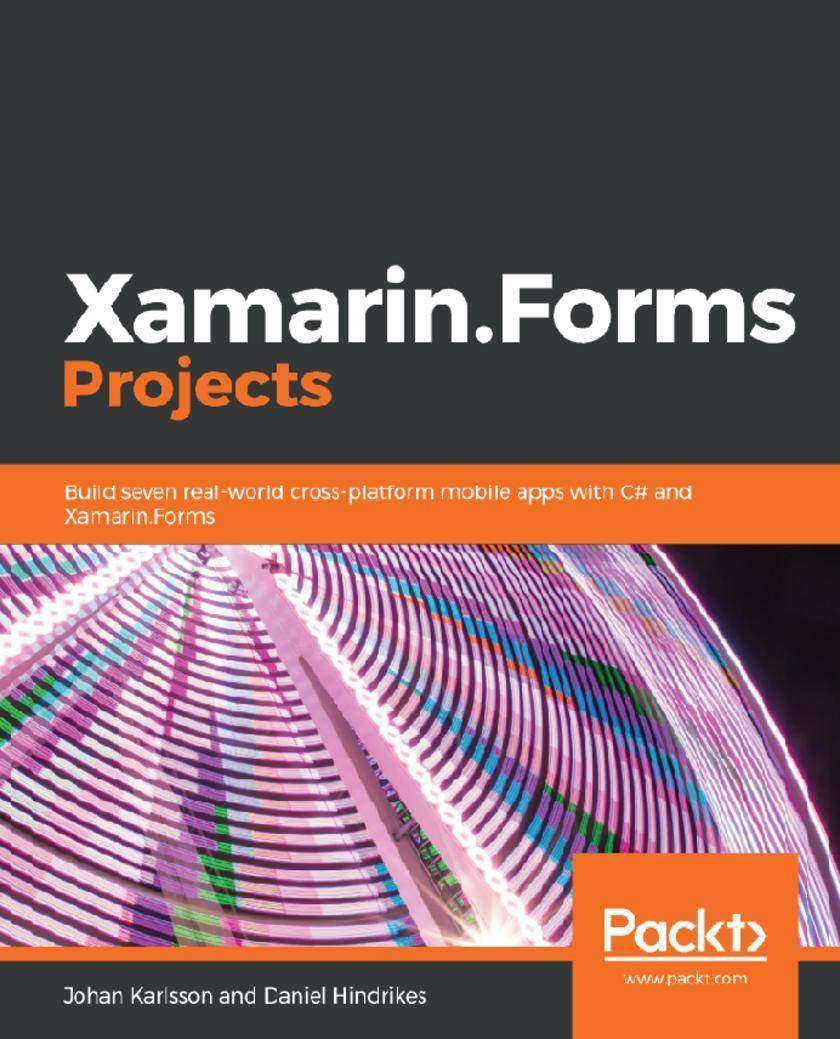
Xamarin.Forms Projects
¥71.93
Explore Xamarin.Forms to develop dynamic applications Key Features *Explore SQLite through Xamarin to store locations for various location-based applications *Make a real-time serverless chat service by using Azure SignalR service *Build Augmented Reality application with the power of UrhoSharp together with ARKit and ARCore Book Description Xamarin.Forms is a lightweight cross-platform development toolkit for building applications with a rich user interface. In this book you'll start by building projects that explain the Xamarin.Forms ecosystem to get up and running with building cross-platform applications. We'll increase in difficulty throughout the projects, making you learn the nitty-gritty of Xamarin.Forms offerings. You'll gain insights into the architecture, how to arrange your app's design, where to begin developing, what pitfalls exist, and how to avoid them. The book contains seven real-world projects, to get you hands-on with building rich UIs and providing a truly cross-platform experience. It will also guide you on how to set up a machine for Xamarin app development. You'll build a simple to-do application that gets you going, then dive deep into building advanced apps such as messaging platform, games, and machine learning, to build a UI for an augmented reality project. By the end of the book, you'll be confident in building cross-platforms and fitting Xamarin.Forms toolkits in your app development. You'll be able to take the practice you get from this book to build applications that comply with your requirements. What you will learn *Set up a machine for Xamarin development *Get to know about MVVM and data bindings in Xamarin.Forms *Understand how to use custom renderers to gain platform-specific access *Discover Geolocation services through Xamarin Essentials *Create an abstraction of ARKit and ARCore to expose as a single API for the game *Learn how to train a model for image *classification with Azure Cognitive Services Who this book is for This book is for mobile application developers who want to start building native mobile apps using the powerful Xamarin.Forms and C#. Working knowledge of C#, .NET, and Visual Studio is required.
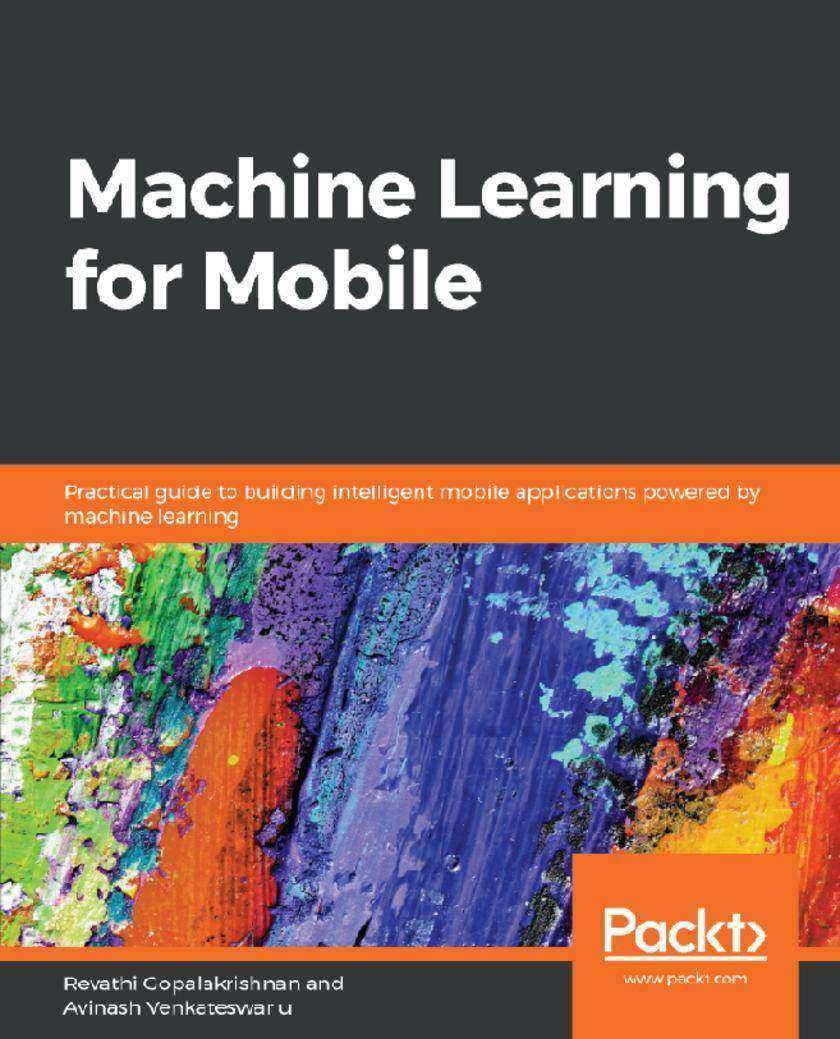
Machine Learning for Mobile
¥71.93
Leverage the power of machine learning on mobiles and build intelligent mobile applications with ease Key Features *Build smart mobile applications for Android and iOS devices *Use popular machine learning toolkits such as Core ML and TensorFlow Lite *Explore cloud services for machine learning that can be used in mobile apps Book Description Machine learning presents an entirely unique opportunity in software development. It allows smartphones to produce an enormous amount of useful data that can be mined, analyzed, and used to make predictions. This book will help you master machine learning for mobile devices with easy-to-follow, practical examples. You will begin with an introduction to machine learning on mobiles and grasp the fundamentals so you become well-acquainted with the subject. You will master supervised and unsupervised learning algorithms, and then learn how to build a machine learning model using mobile-based libraries such as Core ML, TensorFlow Lite, ML Kit, and Fritz on Android and iOS platforms. In doing so, you will also tackle some common and not-so-common machine learning problems with regard to Computer Vision and other real-world domains. By the end of this book, you will have explored machine learning in depth and implemented on-device machine learning with ease, thereby gaining a thorough understanding of how to run, create, and build real-time machine-learning applications on your mobile devices. What you will learn *Build intelligent machine learning models that run on Android and iOS *Use machine learning toolkits such as Core ML, TensorFlow Lite, and more *Learn how to use Google Mobile Vision in your mobile apps *Build a spam message detection system using Linear SVM *Using Core ML to implement a regression model for iOS devices *Build image classification systems using TensorFlow Lite and Core ML Who this book is for If you are a mobile app developer or a machine learning enthusiast keen to use machine learning to build smart mobile applications, this book is for you. Some experience with mobile application development is all you need to get started with this book. Prior experience with machine learning will be an added bonus
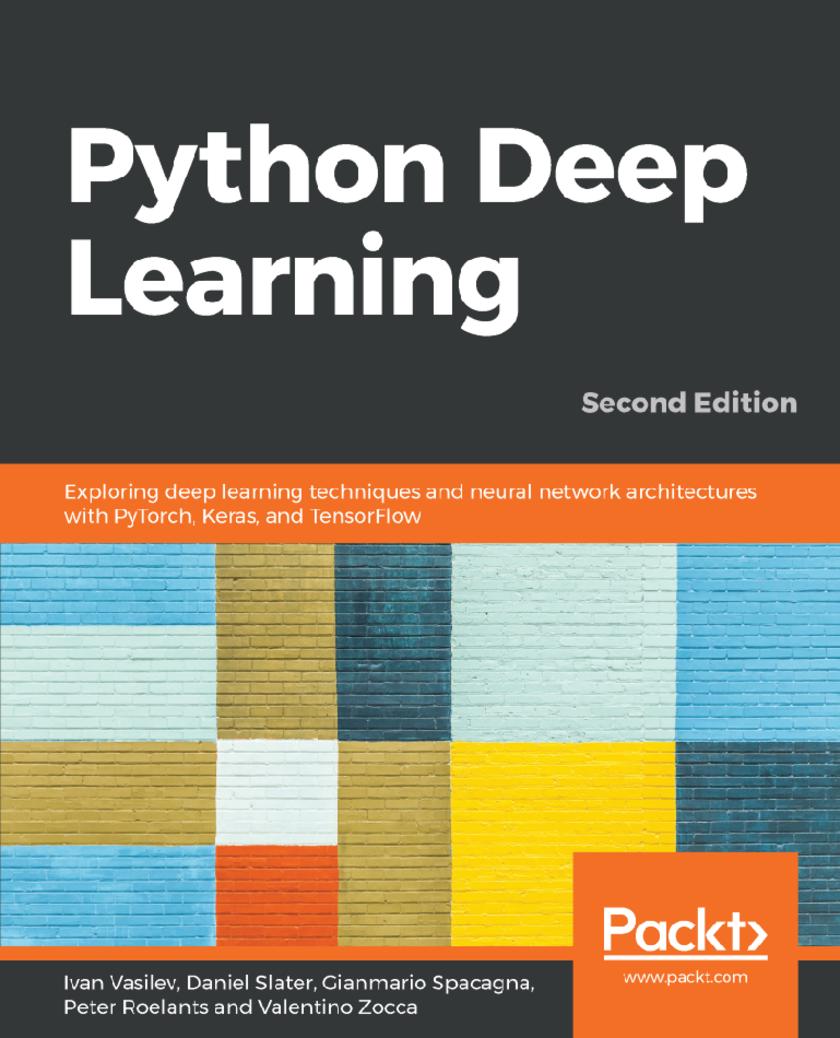
Python Deep Learning
¥71.93
Learn advanced state-of-the-art deep learning techniques and their applications using popular Python libraries Key Features *Build a strong foundation in neural networks and deep learning with Python libraries *Explore advanced deep learning techniques and their applications across computer vision and NLP *Learn how a computer can navigate in complex environments with reinforcement learning Book Description With the surge in artificial intelligence in applications catering to both business and consumer needs, deep learning is more important than ever for meeting current and future market demands. With this book, you’ll explore deep learning, and learn how to put machine learning to use in your projects. This second edition of Python Deep Learning will get you up to speed with deep learning, deep neural networks, and how to train them with high-performance algorithms and popular Python frameworks. You’ll uncover different neural network architectures, such as convolutional networks, recurrent neural networks, long short-term memory (LSTM) networks, and capsule networks. You’ll also learn how to solve problems in the fields of computer vision, natural language processing (NLP), and speech recognition. You'll study generative model approaches such as variational autoencoders and Generative Adversarial Networks (GANs) to generate images. As you delve into newly evolved areas of reinforcement learning, you’ll gain an understanding of state-of-the-art algorithms that are the main components behind popular games Go, Atari, and Dota. By the end of the book, you will be well-versed with the theory of deep learning along with its real-world applications. What you will learn *Grasp the mathematical theory behind neural networks and deep learning processes *Investigate and resolve computer vision challenges using convolutional networks and capsule networks *Solve generative tasks using variational autoencoders and Generative Adversarial Networks *Implement complex NLP tasks using recurrent networks (LSTM and GRU) and attention models *Explore reinforcement learning and understand how agents behave in a complex environment *Get up to date with applications of deep learning in autonomous vehicles Who this book is for This book is for data science practitioners, machine learning engineers, and those interested in deep learning who have a basic foundation in machine learning and some Python programming experience. A background in mathematics and conceptual understanding of calculus and statistics will help you gain maximum benefit from this book.
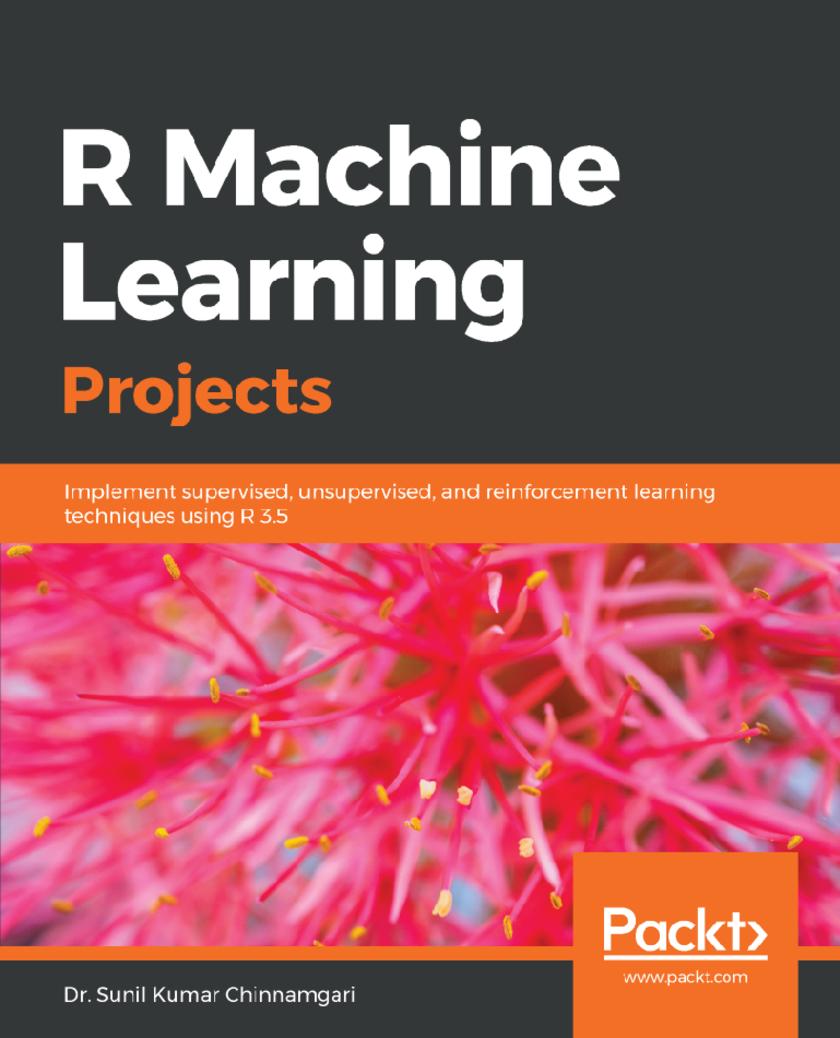
R Machine Learning Projects
¥71.93
Master a range of machine learning domains with real-world projects using TensorFlow for R, H2O, MXNet, and more Key Features *Master machine learning, deep learning, and predictive modeling concepts in R 3.5 *Build intelligent end-to-end projects for finance, retail, social media, and a variety of domains *Implement smart cognitive models with helpful tips and best practices Book Description R is one of the most popular languages when it comes to performing computational statistics (statistical computing) easily and exploring the mathematical side of machine learning. With this book, you will leverage the R ecosystem to build efficient machine learning applications that carry out intelligent tasks within your organization. This book will help you test your knowledge and skills, guiding you on how to build easily through to complex machine learning projects. You will first learn how to build powerful machine learning models with ensembles to predict employee attrition. Next, you’ll implement a joke recommendation engine and learn how to perform sentiment analysis on Amazon reviews. You’ll also explore different clustering techniques to segment customers using wholesale data. In addition to this, the book will get you acquainted with credit card fraud detection using autoencoders, and reinforcement learning to make predictions and win on a casino slot machine. By the end of the book, you will be equipped to confidently perform complex tasks to build research and commercial projects for automated operations. What you will learn *Explore deep neural networks and various frameworks that can be used in R *Develop a joke recommendation engine to recommend jokes that match users’ tastes *Create powerful ML models with ensembles to predict employee attrition *Build autoencoders for credit card fraud detection *Work with image recognition and convolutional neural networks *Make predictions for casino slot machine using reinforcement learning *Implement NLP techniques for sentiment analysis and customer segmentation Who this book is for If you’re a data analyst, data scientist, or machine learning developer who wants to master machine learning concepts using R by building real-world projects, this is the book for you. Each project will help you test your skills in implementing machine learning algorithms and techniques. A basic understanding of machine learning and working knowledge of R programming is necessary to get the most out of this book.
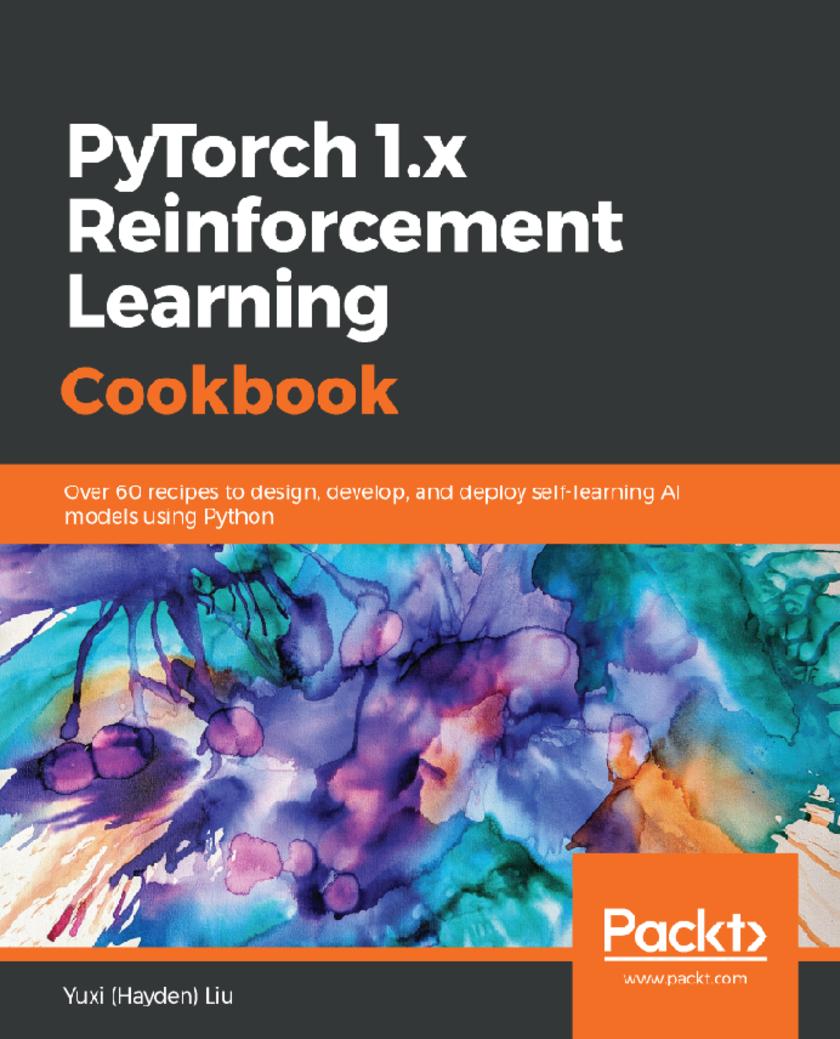
PyTorch 1.x Reinforcement Learning Cookbook
¥71.93
Implement reinforcement learning techniques and algorithms with the help of real-world examples and recipes Key Features * Use PyTorch 1.x to design and build self-learning artificial intelligence (AI) models * Implement RL algorithms to solve control and optimization challenges faced by data scientists today * Apply modern RL libraries to simulate a controlled environment for your projects Book Description Reinforcement learning (RL) is a branch of machine learning that has gained popularity in recent times. It allows you to train AI models that learn from their own actions and optimize their behavior. PyTorch has also emerged as the preferred tool for training RL models because of its efficiency and ease of use. With this book, you'll explore the important RL concepts and the implementation of algorithms in PyTorch 1.x. The recipes in the book, along with real-world examples, will help you master various RL techniques, such as dynamic programming, Monte Carlo simulations, temporal difference, and Q-learning. You'll also gain insights into industry-specific applications of these techniques. Later chapters will guide you through solving problems such as the multi-armed bandit problem and the cartpole problem using the multi-armed bandit algorithm and function approximation. You'll also learn how to use Deep Q-Networks to complete Atari games, along with how to effectively implement policy gradients. Finally, you'll discover how RL techniques are applied to Blackjack, Gridworld environments, internet advertising, and the Flappy Bird game. By the end of this book, you'll have developed the skills you need to implement popular RL algorithms and use RL techniques to solve real-world problems. What you will learn * Use Q-learning and the state–action–reward–state–action (SARSA) algorithm to solve various Gridworld problems * Develop a multi-armed bandit algorithm to optimize display advertising * Scale up learning and control processes using Deep Q-Networks * Simulate Markov Decision Processes, OpenAI Gym environments, and other common control problems * Select and build RL models, evaluate their performance, and optimize and deploy them * Use policy gradient methods to solve continuous RL problems Who this book is for Machine learning engineers, data scientists and AI researchers looking for quick solutions to different reinforcement learning problems will find this book useful. Although prior knowledge of machine learning concepts is required, experience with PyTorch will be useful but not necessary.
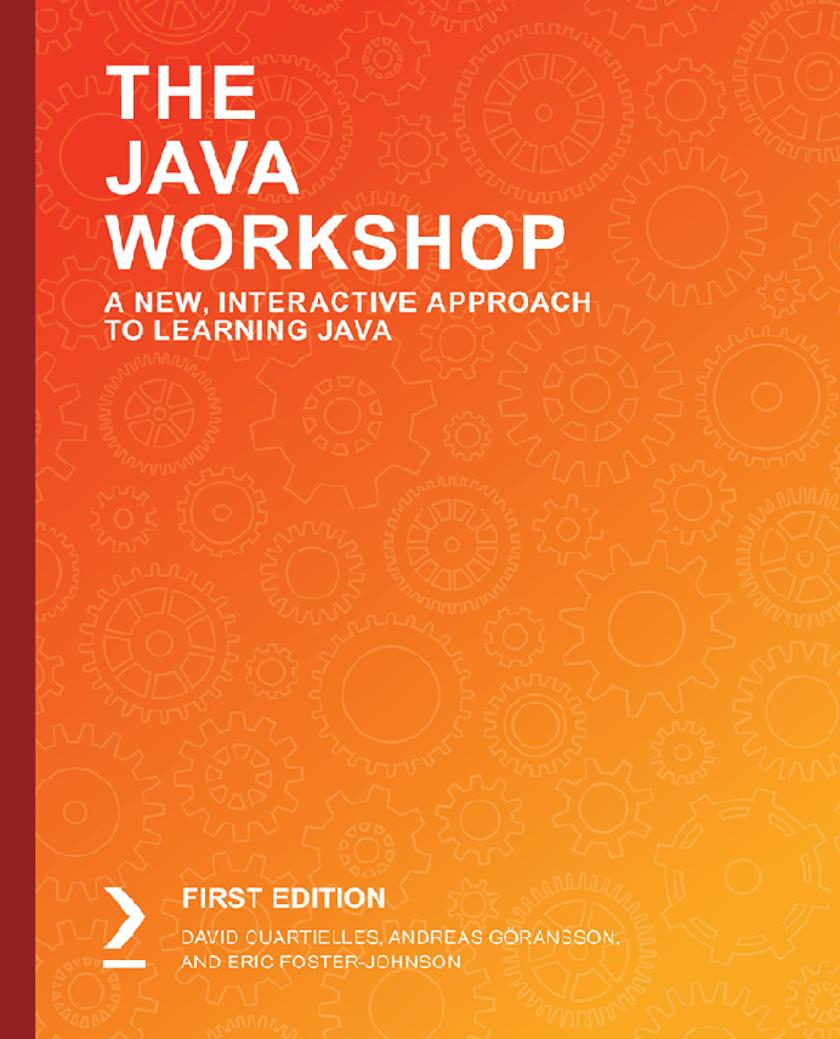
The Java Workshop
¥71.93
Cut through the noise and get real results with a step-by-step approach to learning Java programming Key Features * Ideal for the Java beginner who is getting started for the first time * A step-by-step Java tutorial with exercises and activities that help build key skills * Structured to let you progress at your own pace, on your own terms * Use your physical copy to redeem free access to the online interactive edition Book Description You already know you want to learn Java, and a smarter way to learn Java 12 is to learn by doing. The Java Workshop focuses on building up your practical skills so that you can develop high-performance Java applications that work flawlessly within the JVM across web, mobile and desktop. You'll learn from real examples that lead to real results. Throughout The Java Workshop, you'll take an engaging step-by-step approach to understanding Java. You won't have to sit through any unnecessary theory. If you're short on time you can jump into a single exercise each day or spend an entire weekend learning about Reactive programming and Unit testing. It's your choice. Learning on your terms, you'll build up and reinforce key skills in a way that feels rewarding. Every physical copy of The Java Workshop unlocks access to the interactive edition. With videos detailing all exercises and activities, you'll always have a guided solution. You can also benchmark yourself against assessments, track progress, and receive free content updates. You'll even earn a secure credential that you can share and verify online upon completion. It's a premium learning experience that's included with your printed copy. To redeem, follow the instructions located at the start of your Java book. Fast-paced and direct, The Java Workshop is the ideal companion for Java beginners. You'll build and iterate on your code like a software developer, learning along the way. This process means that you'll find that your new skills stick, embedded as best practice. A solid foundation for the years ahead. What you will learn * Get to grips with fundamental concepts and conventions of Java 12 * Write clean and well-commented code that's easy to maintain * Debug and compile logical errors and handle exceptions in your programs * Understand how to work with Java APIs and Java streams * Learn how to use third-party libraries and software development kits (SDKs) * Discover how you can work with information stored in databases * Understand how you can keep data secure with cryptography and encryption * Learn how to keep your development process bug-free with unit testing in Java Who this book is for Our goal at Packt is to help you be successful, in whatever it is you choose to do. The Java Workshop is an ideal Java tutorial for the Java beginner who is just getting started. Pick up a Workshop today, and let Packt help you develop skills that stick with you for life.
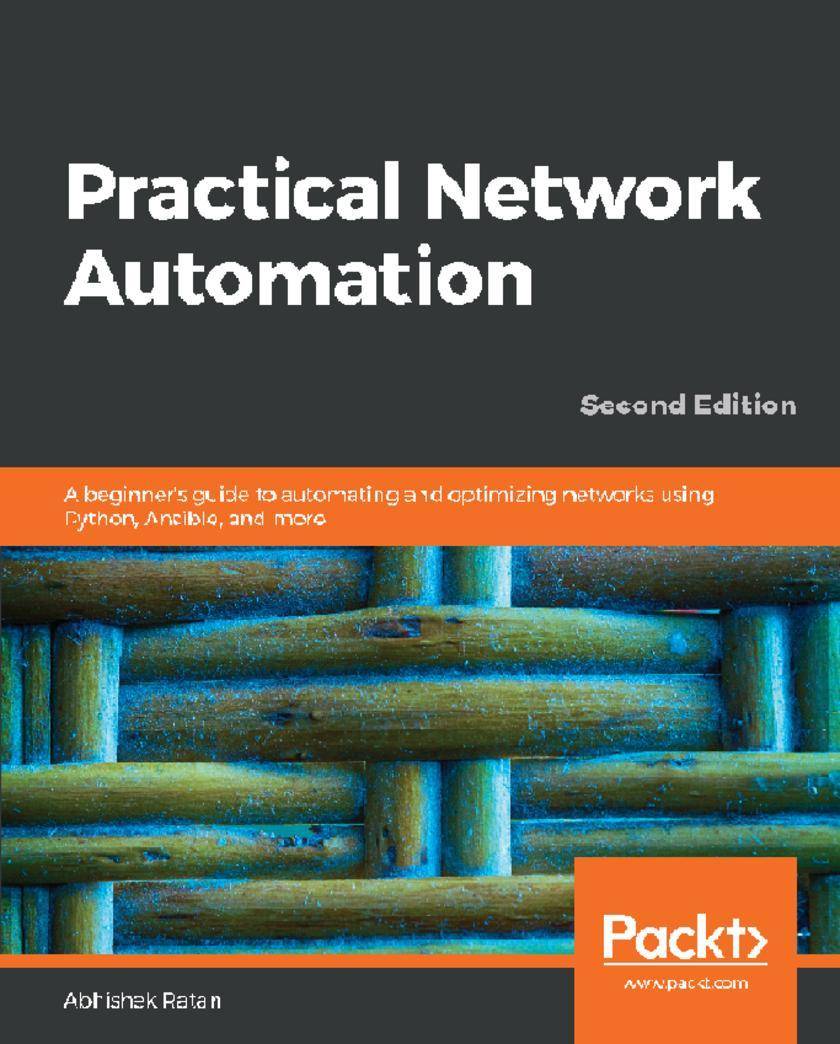
Practical Network Automation
¥71.93
Leverage the power of Python, Ansible and other network automation tools to make your network robust and more secure Key Features *Get introduced to the concept of network automation with relevant use cases *Apply Continuous Integration and DevOps to improve your network performance *Implement effective automation using tools such as Python, Ansible, and more Book Description Network automation is the use of IT controls to supervise and carry out everyday network management functions. It plays a key role in network virtualization technologies and network functions. The book starts by providing an introduction to network automation, and its applications, which include integrating DevOps tools to automate the network efficiently. It then guides you through different network automation tasks and covers various data digging and performing tasks such as ensuring golden state configurations using templates, interface parsing. This book also focuses on Intelligent Operations using Artificial Intelligence and troubleshooting using chatbots and voice commands. The book then moves on to the use of Python and the management of SSH keys for machine-to-machine (M2M) communication, all followed by practical use cases. The book also covers the importance of Ansible for network automation, including best practices in automation; ways to test automated networks using tools such as Puppet, SaltStack, and Chef; and other important techniques. Through practical use-cases and examples, this book will acquaint you with the various aspects of network automation. It will give you the solid foundation you need to automate your own network without any hassle. What you will learn *Get started with the fundamental concepts of network automation *Perform intelligent data mining and remediation based on triggers *Understand how AIOps works in operations *Trigger automation through data factors *Improve your data center's robustness and security through data digging *Get access infrastructure through API Framework for chatbot and voice interactive troubleshootings *Set up communication with SSH-based devices using Netmiko Who this book is for If you are a network engineer or a DevOps professional looking for an extensive guide to help you automate and manage your network efficiently, then this book is for you. No prior experience with network automation is required to get started, however you will need some exposure to Python programming to get the most out of this book.
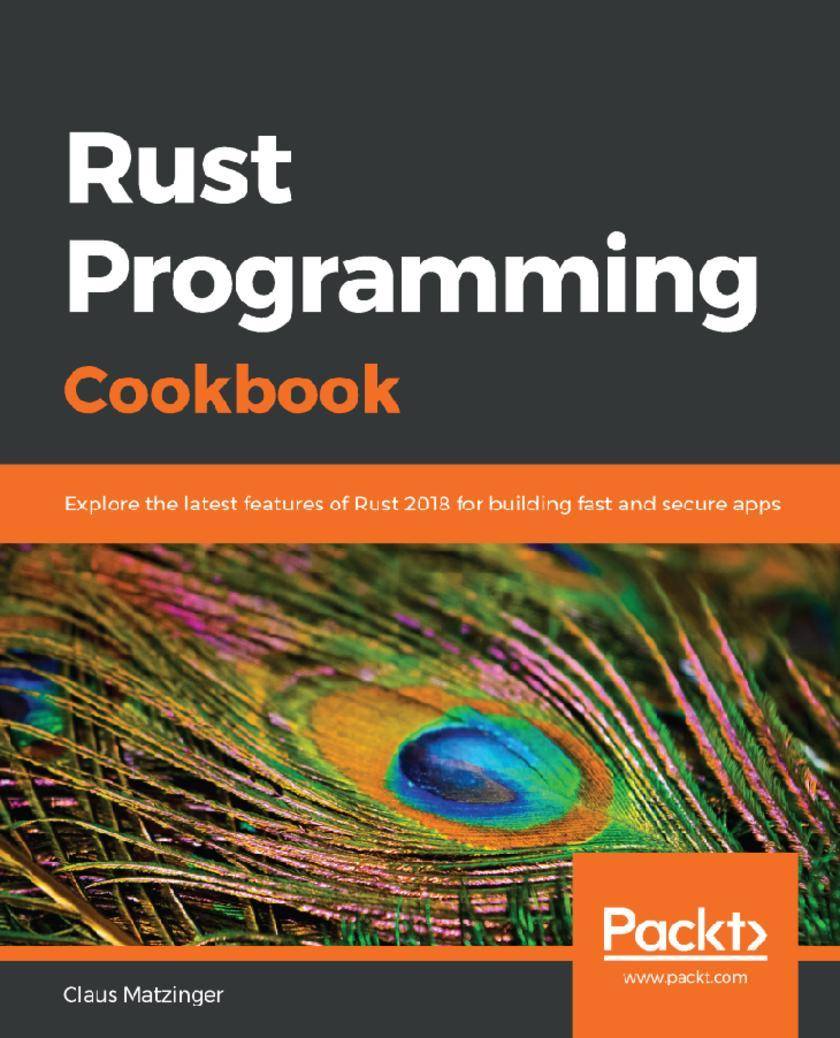
Rust Programming Cookbook
¥71.93
Practical solutions to overcome challenges in creating console and web applications and working with systems-level and embedded code, network programming, deep neural networks, and much more. Key Features * Work through recipes featuring advanced concepts such as concurrency, unsafe code, and macros to migrate your codebase to the Rust programming language * Learn how to run machine learning models with Rust * Explore error handling, macros, and modularization to write maintainable code Book Description Rust 2018, Rust's first major milestone since version 1.0, brings more advancement in the Rust language. The Rust Programming Cookbook is a practical guide to help you overcome challenges when writing Rust code. This Rust book covers recipes for configuring Rust for different environments and architectural designs, and provides solutions to practical problems. It will also take you through Rust's core concepts, enabling you to create efficient, high-performance applications that use features such as zero-cost abstractions and improved memory management. As you progress, you'll delve into more advanced topics, including channels and actors, for building scalable, production-grade applications, and even get to grips with error handling, macros, and modularization to write maintainable code. You will then learn how to overcome common roadblocks when using Rust for systems programming, IoT, web development, and network programming. Finally, you'll discover what Rust 2018 has to offer for embedded programmers. By the end of the book, you'll have learned how to build fast and safe applications and services using Rust. What you will learn * Understand how Rust provides unique solutions to solve system programming language problems * Grasp the core concepts of Rust to develop fast and safe applications * Explore the possibility of integrating Rust units into existing applications for improved efficiency * Discover how to achieve better parallelism and security with Rust * Write Python extensions in Rust * Compile external assembly files and use the Foreign Function Interface (FFI) * Build web applications and services using Rust for high performance Who this book is for The Rust cookbook is for software developers looking to enhance their knowledge of Rust and leverage its features using modern programming practices. Familiarity with Rust language is expected to get the most out of this book.
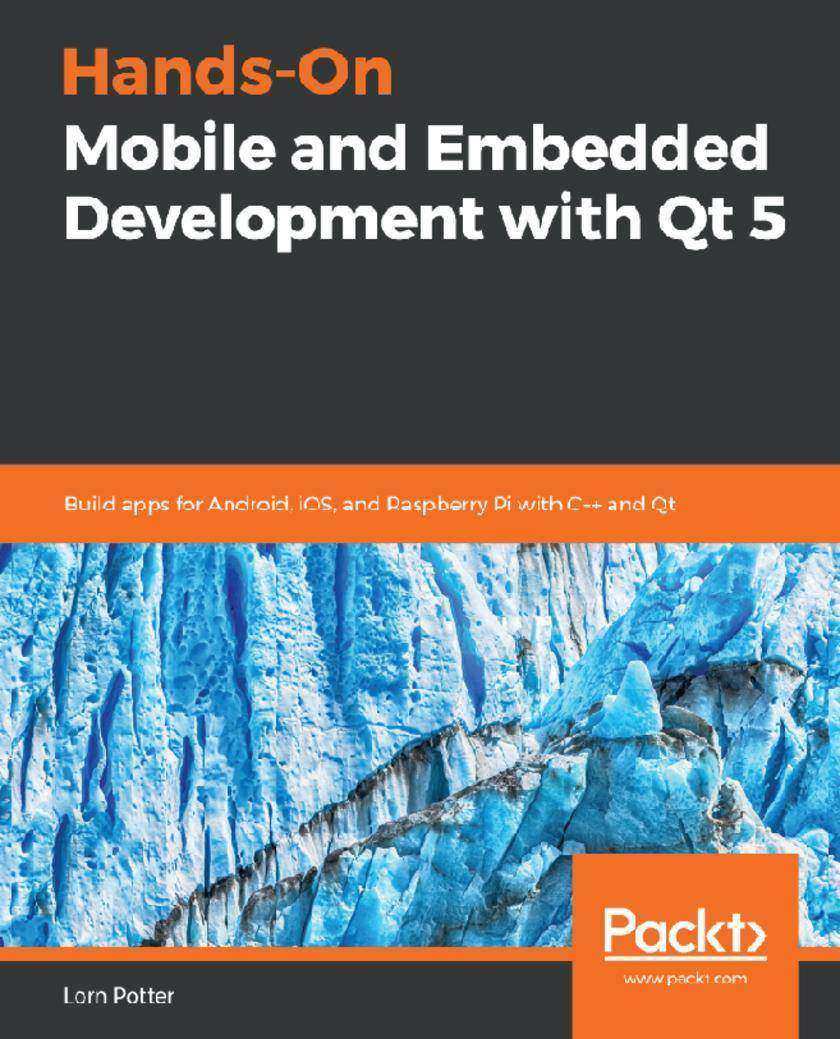
Hands-On Mobile and Embedded Development with Qt 5
¥70.84
Explore Qt framework and APIs for building cross-platform applications for mobile devices, embedded systems, and IoT Key Features * Build cross-platform applications and deploy them across mobile and connected devices * Design 2D and 3D UIs for embedded systems using Yocto and Qt Creator * Build machine to machine automation solution using QtSensors, QtMQTT, and QtWebSockets Book Description Qt is a world-class framework, helping you to develop rich graphical user interfaces (GUIs) and multi-platform applications that run on all major desktop platforms and most mobile or embedded platforms. The framework helps you connect the dots across platforms and between online and physical experience. This book will help you leverage the fully-featured Qt framework and its modular cross-platform library classes and intuitive APIs to develop applications for mobile, IoT, and industrial embedded systems. Considerations such as screen size, device orientation changes, and small memory will be discussed. We will focus on various core aspects of embedded and mobile systems, such as connectivity, networking, and sensors; there is no IoT without sensors. You will learn how to quickly design a flexible, fast, and responsive UI that looks great. Going further, you will implement different elements in a matter of minutes and synchronize the UI elements with the 3D assets with high precision. You will learn how to create high-performance embedded systems with 3D/2D user interfaces, and deploy and test on your target hardware. The book will explore several new features, including Qt for WebAssembly. At the end of this book, you will learn about creating a full software stack for embedded Linux systems using Yocto and Boot to Qt for Device Creation. What you will learn * Explore the latest features of Qt, such as preview for Qt for Python and Qt for WebAssembly * Create fluid UIs with a dynamic layout for different sized screens * Deploy embedded applications on Linux systems using Yocto * Design Qt APIs for building applications for embedded and mobile devices * Utilize connectivity for networked and machine automated applications * Discover effective techniques to apply graphical effects using Qt Quick apps Who this book is for The book is ideal for mobile developers, embedded systems engineers and enthusiasts who are interested in building cross-platform applications with Qt. Prior knowledge of C++ is required.
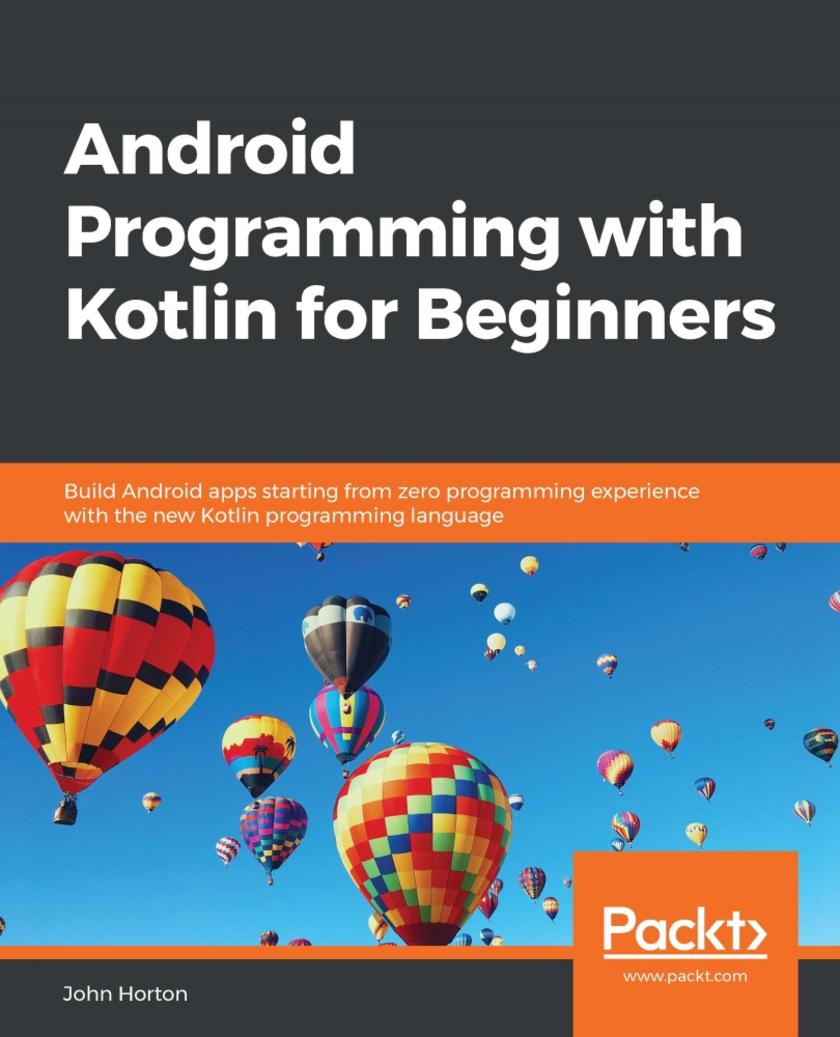
Android Programming with Kotlin for Beginners
¥70.84
Build smart looking Kotlin apps with UI and functionality for the Android platform Key Features * Start your Android programming career, or just have fun publishing apps on Google Play marketplace * The first-principle introduction to Kotlin through Android, to start building easy-to-use apps * Learn by example and build four real-world apps and dozens of mini-apps Book Description Android is the most popular mobile operating system in the world and Kotlin has been declared by Google as a first-class programming language to build Android apps. With the imminent arrival of the most anticipated Android update, Android 10 (Q), this book gets you started building apps compatible with the latest version of Android. It adopts a project-style approach, where we focus on teaching the fundamentals of Android app development and the essentials of Kotlin by building three real-world apps and more than a dozen mini-apps. The book begins by giving you a strong grasp of how Kotlin and Android work together before gradually moving onto exploring the various Android APIs for building stunning apps for Android with ease. You will learn to make your apps more presentable using different layouts. You will dive deep into Kotlin programming concepts such as variables, functions, data structures, Object-Oriented code, and how to connect your Kotlin code to the UI. You will learn to add multilingual text so that your app is accessible to millions of more potential users. You will learn how animation, graphics, and sound effects work and are implemented in your Android app. By the end of the book, you will have sound knowledge about significant Kotlin programming concepts and start building your own fully featured Android apps. What you will learn * Learn how Kotlin and Android work together * Build a graphical drawing app using Object-Oriented Programming (OOP) principles * Build beautiful, practical layouts using ScrollView, RecyclerView, NavigationView, ViewPager and CardView * Write Kotlin code to manage an apps' data using different strategies including JSON and the built-in Android SQLite database * Add user interaction, data captures, sound, and animation to your apps * Implement dialog boxes to capture input from the user * Build a simple database app that sorts and stores the user's data Who this book is for This book is for people who are new to Kotlin, Android and want to develop Android apps.It also acts as a refresher for those who have some experience in programming with Android and Kotlin.
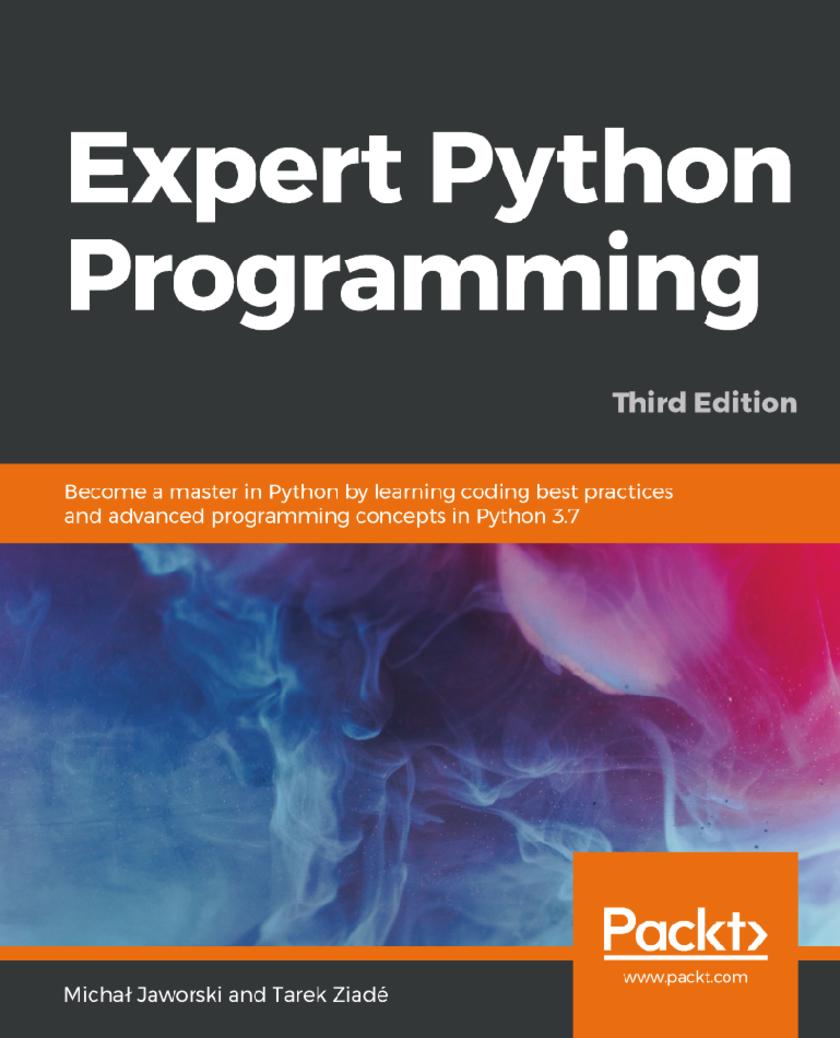
Expert Python Programming
¥70.84
Refine your Python programming skills and build professional grade applications with this comprehensive guide Key Features * Create manageable code that can run in various environments with different sets of dependencies * Implement effective Python data structures and algorithms to write optimized code * Discover the exciting new features of Python 3.7 Book Description Python is a dynamic programming language that's used in a wide range of domains thanks to its simple yet powerful nature. Although writing Python code is easy, making it readable, reusable, and easy to maintain is challenging. Complete with best practices, useful tools, and standards implemented by professional Python developers, the third edition of Expert Python Programming will help you overcome this challenge. The book will start by taking you through the new features in Python 3.7. You'll then learn the advanced components of Python syntax, in addition to understanding how to apply concepts of various programming paradigms, including object-oriented programming, functional programming, and event-driven programming. This book will also guide you through learning the best naming practices, writing your own distributable Python packages, and getting up to speed with automated ways of deploying your software on remote servers. You’ll discover how to create useful Python extensions with C, C++, Cython, and CFFI. Furthermore, studying about code management tools, writing clear documentation, and exploring test-driven development will help you write clean code. By the end of the book, you will have become an expert in writing efficient and maintainable Python code. What you will learn * Explore modern ways of setting up repeatable and consistent development environments * Package Python code effectively for community and production use * Learn modern syntax elements of Python programming such as f-strings, enums, and lambda functions * Demystify metaprogramming in Python with metaclasses * Write concurrent code in Python * Extend Python with code written in different languages * Integrate Python with code written in different languages Who this book is for This book will appeal to you if you’re a programmer looking to take your Python knowledge to the next level by writing efficient code and learning the latest features of version 3.7 and above.
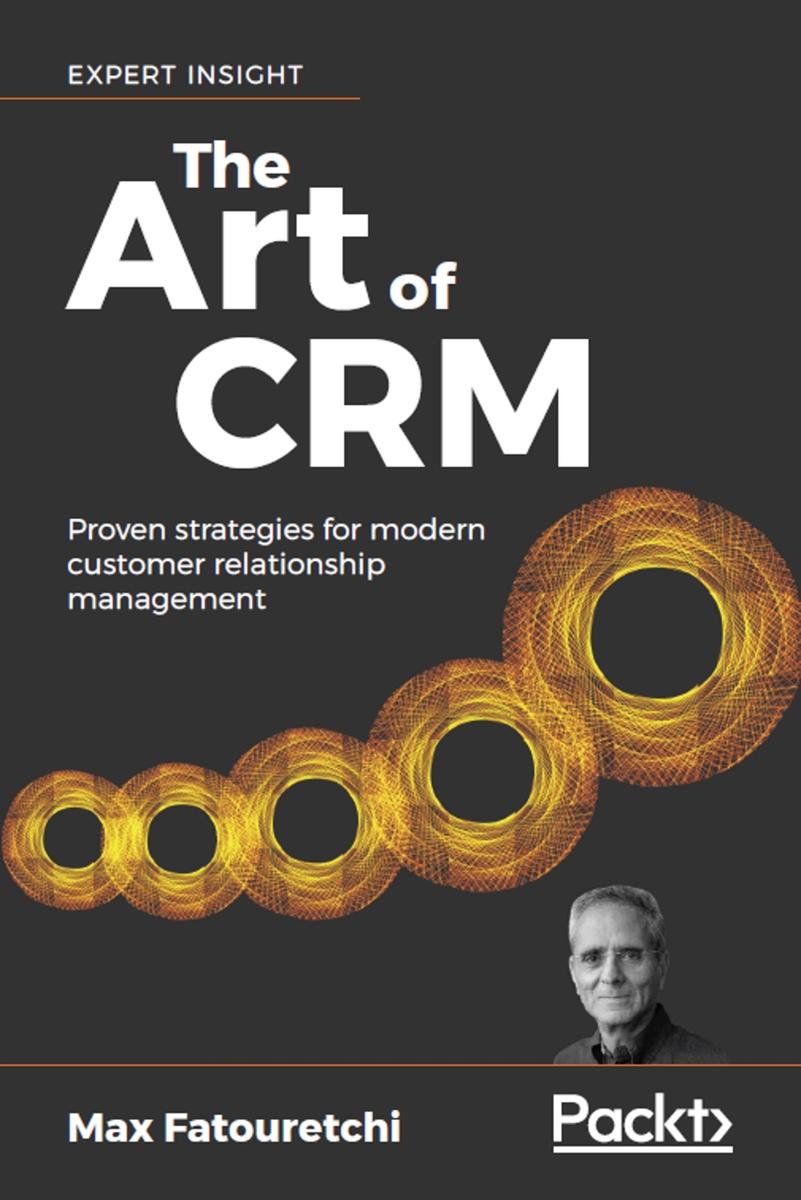
The Art of CRM
¥70.84
This CRM masterclass gives you a proven approach to modern customer relationship management Key Features * Proven techniques to architect CRM systems that perform well, that are built on time and on budget, and that deliver value for many years * Combines technical knowledge and business experience to provide a powerful guide to CRM implementation * Covers modern CRM opportunities and challenges including machine learning, cloud hosting, and GDPR compliance Book Description CRM systems have delivered huge value to organizations. This book shares proven and cutting-edge techniques to increase the power of CRM even further. In The Art of CRM, Max Fatouretchi shares his decades of experience building successful CRM systems that make a real difference to business performance. Through clear processes, actionable advice, and informative case studies, The Art of CRM teaches you to design successful CRM systems for your clients. Fatouretchi, founder of Academy4CRM institute, draws on his experience over 20 years and 200 CRM implementations worldwide. Bringing CRM bang up to date, The Art of CRM shows how to add AI and machine learning, ensure compliance with GDPR, and choose between on-premise, cloud, and hybrid hosting solutions. If you’re looking for an expert guide to real-world CRM implementations, this book is for you. What you will learn * Deliver CRM systems that are on time, on budget, and bring lasting value to organizations * Build CRM that excels at operations, analytics, and collaboration * Gather requirements effectively: identify key pain points, objectives, and functional requirements * Develop customer insight through 360-degree client view and client profiling * Turn customer requirements into a CRM design spec * Architect your CRM platform * Bring machine learning and artificial intelligence into your CRM system * Ensure compliance with GDPR and other critical regulations * Choose between on-premise, cloud, and hybrid hosting solutions Who this book is for CRM practitioners who want to update their work with new, proven techniques and approaches
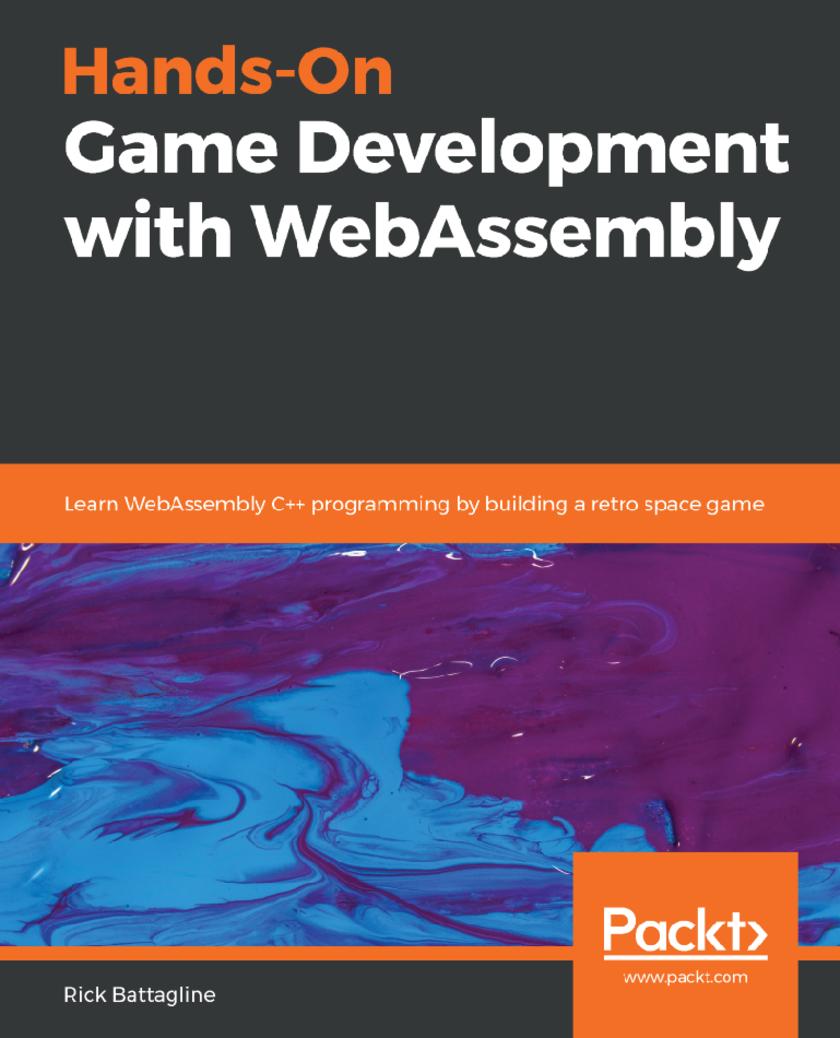
Hands-On Game Development with WebAssembly
¥70.84
Make your WebAssembly journey fun while making a game with it Key Features * Create a WebAssembly game that implements sprites, animations, physics, particle systems, and other game development fundamentals * Get to grips with advanced game mechanics in WebAssembly * Learn to use WebAssembly and WebGL to render to the HTML5 canvas element Book Description Within the next few years, WebAssembly will change the web as we know it. It promises a world where you can write an application for the web in any language, and compile it for native platforms as well as the web. This book is designed to introduce web developers and game developers to the world of WebAssembly by walking through the development of a retro arcade game. You will learn how to build a WebAssembly application using C++, Emscripten, JavaScript, WebGL, SDL, and HTML5. This book covers a lot of ground in both game development and web application development. When creating a game or application that targets WebAssembly, developers need to learn a plethora of skills and tools. This book is a sample platter of those tools and skills. It covers topics including Emscripten, C/C++, WebGL, OpenGL, JavaScript, HTML5, and CSS. The reader will also learn basic techniques for game development, including 2D sprite animation, particle systems, 2D camera design, sound effects, 2D game physics, user interface design, shaders, debugging, and optimization. By the end of the book, you will be able to create simple web games and web applications targeting WebAssembly. What you will learn * Build web applications with near-native performance using WebAssembly * Become familiar with how web applications can be used to create games using HTML5 Canvas, WebGL, and SDL * Become well versed with game development concepts such as sprites, animation, particle systems, AI, physics, camera design, sound effects, and shaders * Deploy C/C++ applications to the browser using WebAssembly and Emscripten * Understand how Emscripten HTML shell templates, JavaScript glue code, and a WebAssembly module interact * Debug and performance tune your WebAssembly application Who this book is for Web developers and game developers interested in creating applications for the web using WebAssembly. Game developers interested in deploying their games to the web Web developers interested in creating applications that are potentially orders of magnitude faster than their existing JavaScript web apps C/C++ developers interested in using their existing skills to deploy applications to the web
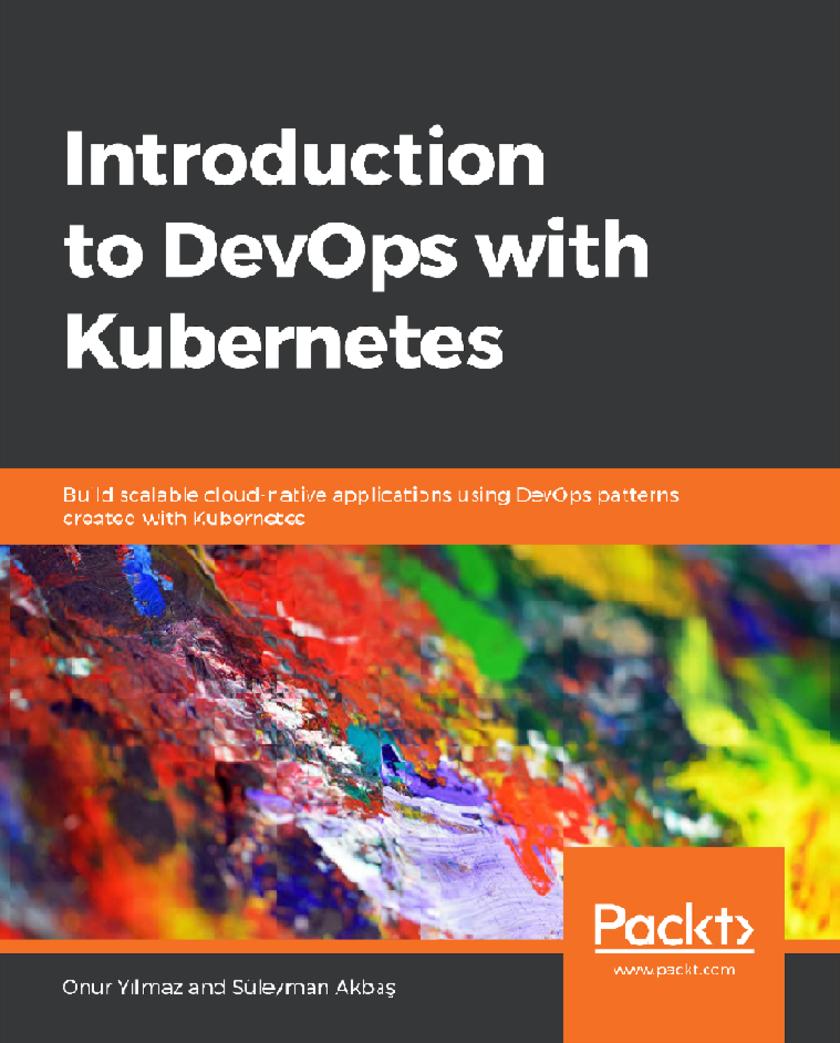
Introduction to DevOps with Kubernetes
¥70.84
Become familiar with Kubernetes and explore techniques to manage your containerized workloads and services Key Features * Learn everything from creating a cluster to monitoring applications in Kubernetes * Understand and develop DevOps primitives using Kubernetes * Use Kubernetes to solve challenging real-life DevOps problems Book Description Kubernetes and DevOps are the two pillars that can keep your business at the top by ensuring high performance of your IT infrastructure. Introduction to DevOps with Kubernetes will help you develop the skills you need to improve your DevOps with the power of Kubernetes. The book begins with an overview of Kubernetes primitives and DevOps concepts. You'll understand how Kubernetes can assist you with overcoming a wide range of real-world operation challenges. You will get to grips with creating and upgrading a cluster, and then learn how to deploy, update, and scale an application on Kubernetes. As you advance through the chapters, you’ll be able to monitor an application by setting up a pod failure alert on Prometheus. The book will also guide you in configuring Alertmanager to send alerts to the Slack channel and trace down a problem on the application using kubectl commands. By the end of this book, you’ll be able to manage the lifecycle of simple to complex applications on Kubernetes with confidence. What you will learn * Create and manage Kubernetes clusters in on-premise systems and cloud * Exercise various DevOps practices using Kubernetes * Explore configuration, secret, and storage management, and exercise these on Kubernetes * Perform different update techniques and apply them on Kubernetes * Use the built-in scaling feature in Kubernetes to scale your applications up and down * Use various troubleshooting techniques and have a monitoring system installed on Kubernetes Who this book is for If you are a developer who wants to learn how to apply DevOps patterns using Kubernetes, then this book is for you. Familiarity with Kubernetes will be useful, but not essential.
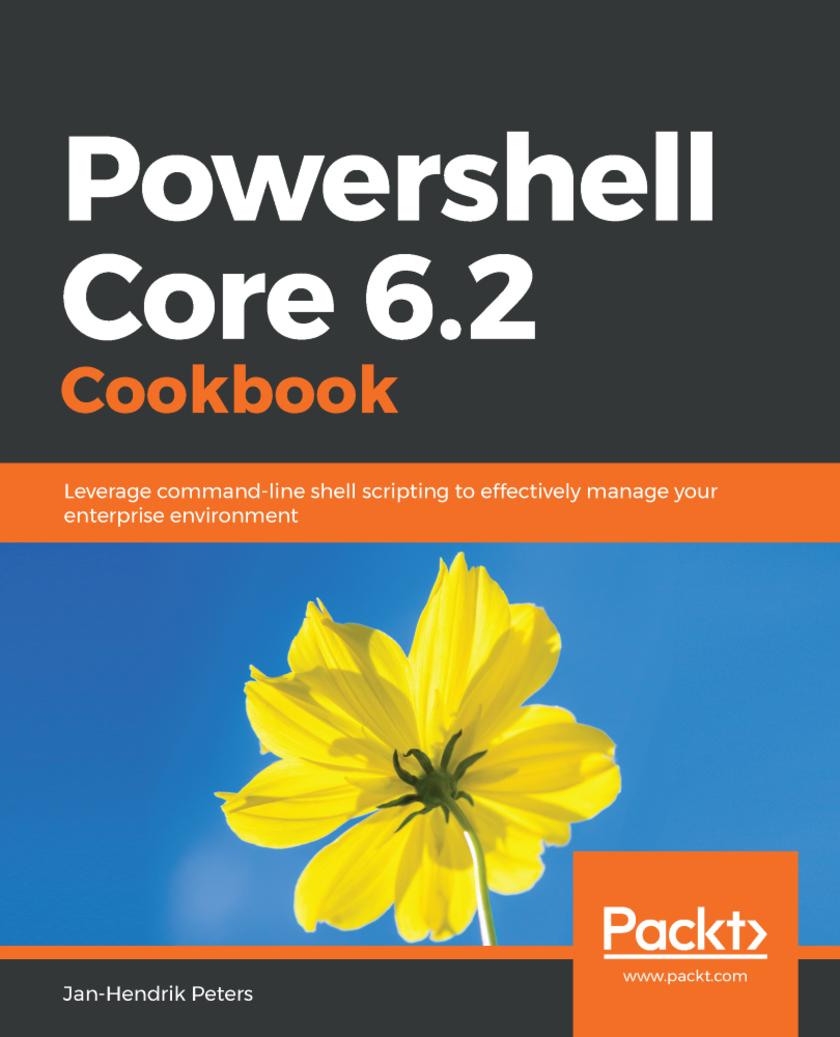
Powershell Core 6.2 Cookbook
¥70.84
Make use of hands-on recipes for many tasks that are typically encountered in both the on-premises as well as the cloud world. Key Features * A recipe-based guide to help you build effective administrative solutions * Gain hands-on experience with the newly added features of PowerShell Core * Manage critical business environments with professional scripting practices Book Description This book will follow a recipe-based approach and start off with an introduction to the fundamentals of PowerShell, and explaining how to install and run it through simple examples. Next, you will learn how to use PowerShell to access and manipulate data and how to work with different streams as well. You will also explore the object model which will help with regard to PowerShell function deployment. Going forward, you will get familiar with the pipeline in its different use cases. The next set of chapters will deal with the different ways of accessing data in PowerShell. You will also learn to automate various tasks in Windows and Linux using PowerShell Core, as well as explore Windows Server. Later, you will be introduced to Remoting in PowerShell Core and Just Enough Administration concept. The last set of chapters will help you understand the management of a private and public cloud with PowerShell Core. You will also learn how to access web services and explore the high-performance scripting methods. By the end of this book, you will gain the skills to manage complex tasks effectively along with increasing the performance of your environment. What you will learn * Leverage cross-platform interaction with systems * Make use of the PowerShell recipes for frequent tasks * Get a better understanding of the inner workings of PowerShell * Understand the compatibility of built-in Windows modules with PowerShell Core * Learn best practices associated with PowerShell scripting * Avoid common pitfalls and mistakes Who this book is for This book will be for windows administrators who want to enhance their PowerShell scripting skills to the next level. System administrators wanting to automate common to complex tasks with PowerShell scripts would benefit from this book. Prior understanding on PowerShell would be necessary.
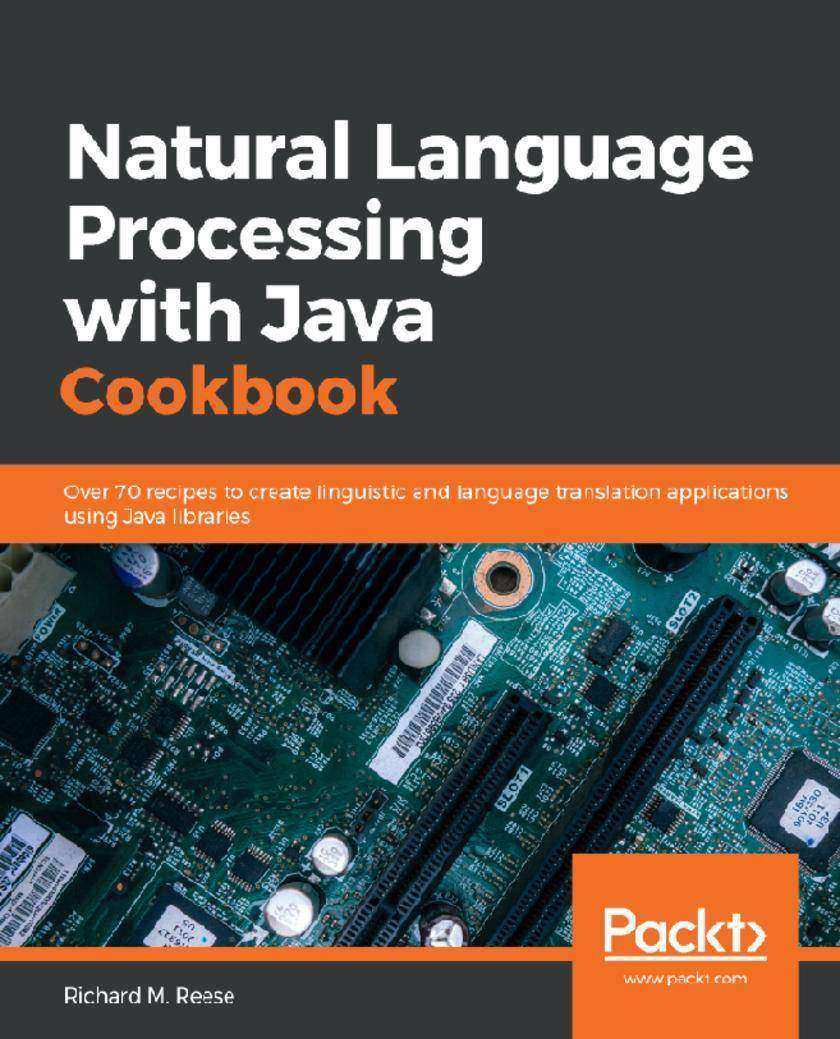
Natural Language Processing with Java Cookbook
¥70.84
A problem-solution guide to encounter various NLP tasks utilizing Java open source libraries and cloud-based solutions Key Features * Perform simple-to-complex NLP text processing tasks using modern Java libraries Extract relationships between different text complexities using a problem-solution approach * Utilize cloud-based APIs to perform machine translation operations Book Description Natural Language Processing (NLP) has become one of the prime technologies for processing very large amounts of unstructured data from disparate information sources. This book includes a wide set of recipes and quick methods that solve challenges in text syntax, semantics, and speech tasks. At the beginning of the book, you'll learn important NLP techniques, such as identifying parts of speech, tagging words, and analyzing word semantics. You will learn how to perform lexical analysis and use machine learning techniques to speed up NLP operations. With independent recipes, you will explore techniques for customizing your existing NLP engines/models using Java libraries such as OpenNLP and the Stanford NLP library. You will also learn how to use NLP processing features from cloud-based sources, including Google and Amazon’s AWS. You will master core tasks, such as stemming, lemmatization, part-of-speech tagging, and named entity recognition. You will also learn about sentiment analysis, semantic text similarity, language identification, machine translation, and text summarization. By the end of this book, you will be ready to become a professional NLP expert using a problem-solution approach to analyze any sort of text, sentences, or semantic words. What you will learn * Explore how to use tokenizers in NLP processing * Implement NLP techniques in machine learning and deep learning applications * Identify sentences within the text and learn how to train specialized NER models * Learn how to classify documents and perform sentiment analysis * Find semantic similarities between text elements and extract text from a variety of sources * Preprocess text from a variety of data sources * Learn how to identify and translate languages Who this book is for This book is for data scientists, NLP engineers, and machine learning developers who want to perform their work on linguistic applications faster with the use of popular libraries on JVM machines. This book will help you build real-world NLP applications using a recipe-based approach. Prior knowledge of Natural Language Processing basics and Java programming is expected.
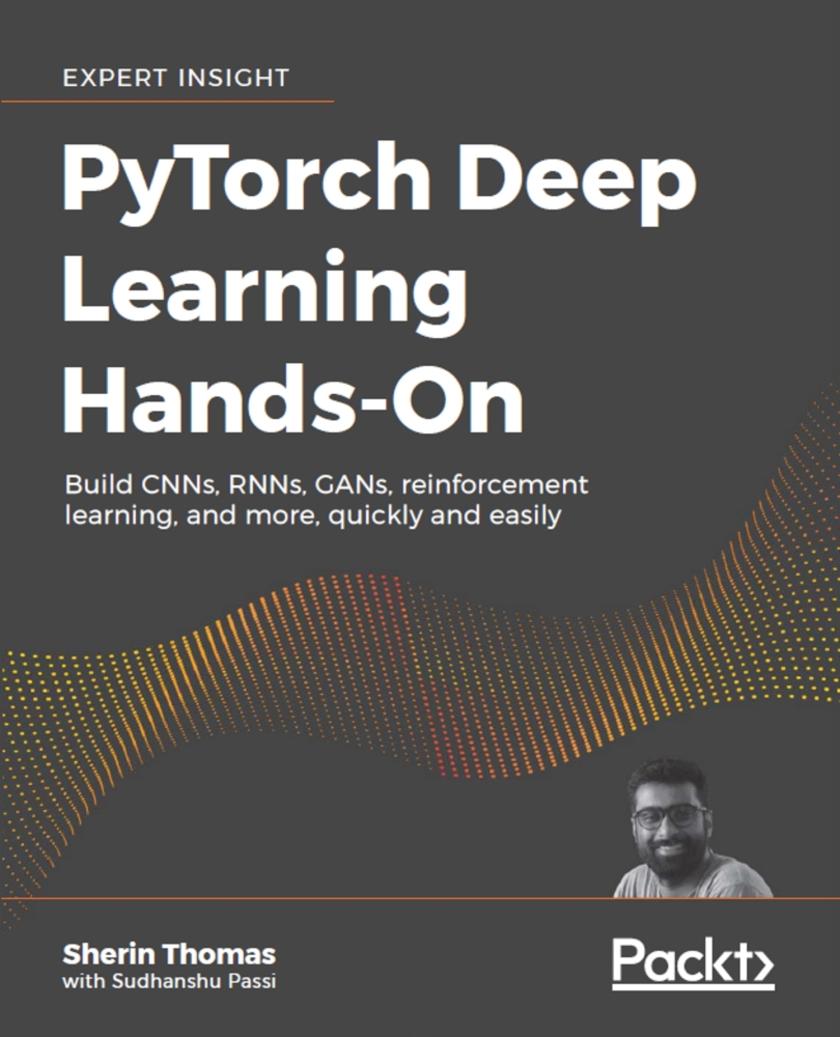
PyTorch Deep Learning Hands-On
¥70.84
All the key deep learning methods built step-by-step in PyTorch Key Features * Understand the internals and principles of PyTorch * Implement key deep learning methods in PyTorch: CNNs, GANs, RNNs, reinforcement learning, and more * Build deep learning workflows and take deep learning models from prototyping to production Book Description PyTorch is a new, lightweight, and Python-first tool for deep learning. Built by Facebook to offer flexibility and speed, it has quickly become the preferred tool for deep learning experts. PyTorch helps you release deep learning models faster than ever before. PyTorch Deep Learning Hands-On shows how to implement every major deep learning architecture in PyTorch. Starting with simple neural networks, it covers PyTorch for computer vision (CNN), natural language processing (RNN), GANs, and reinforcement learning. You will also build deep learning workflows with the PyTorch framework, migrate models built in Python to highly efficient TorchScript, and deploy to production using the most sophisticated available tools. Each chapter focuses on a different area of deep learning. Chapters start with a refresher on the core principles, before sharing the code you need to implement them in PyTorch. If you want to become a deep learning expert this book is for you. What you will learn Use PyTorch to build: * Simple Neural Networks – build neural networks the PyTorch way, with high-level functions, optimizers, and more * Convolutional Neural Networks – create advanced computer vision systems * Recurrent Neural Networks – work with sequential data such as natural language and audio * Generative Adversarial Networks – create new content with models including SimpleGAN and CycleGAN * Reinforcement Learning – develop systems that can solve complex problems such as driving or game playing * Deep Learning workflows – move effectively from ideation to production with proper deep learning workflow using PyTorch and its utility packages * Production-ready models – package your models for high-performance production environments Who this book is for Machine learning professionals and enthusiasts who know Python and want to build efficient and powerful deep learning systems in PyTorch.
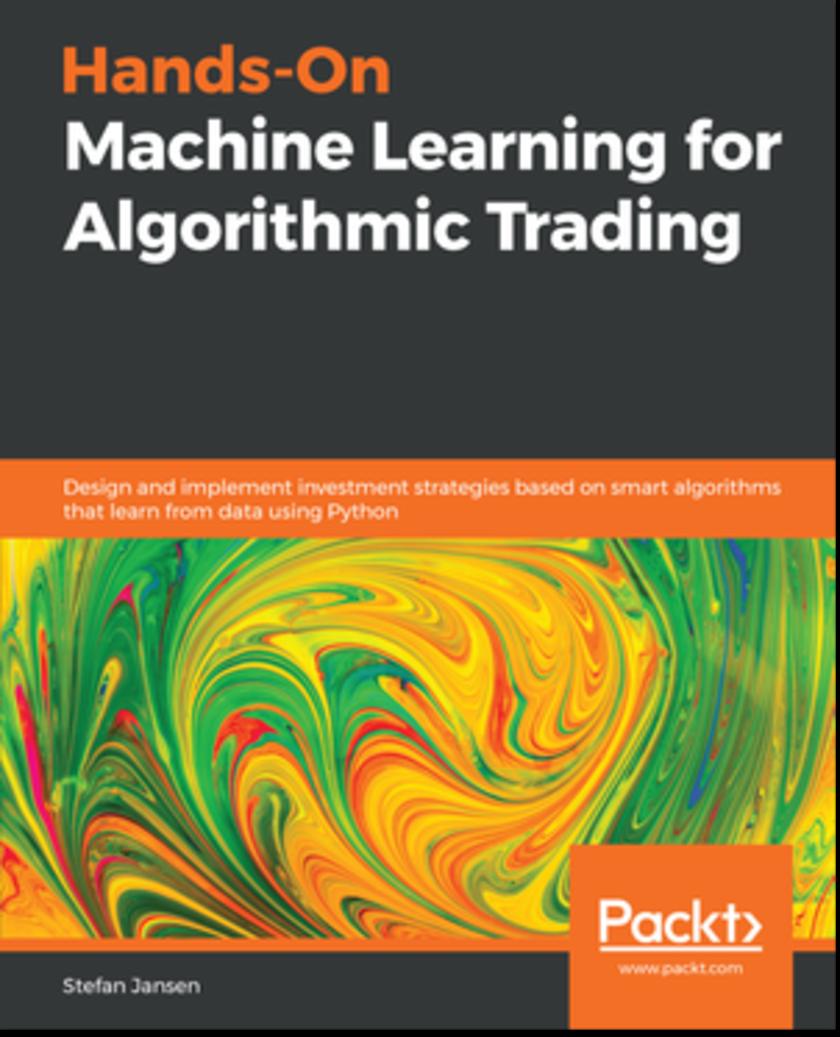
Mastering Python for Finance
¥70.84
Take your financial skills to the next level by mastering cutting-edge mathematical and statistical financial applications Key Features * Explore advanced financial models used by the industry and ways of solving them using Python * Build state-of-the-art infrastructure for modeling, visualization, trading, and more * Empower your financial applications by applying machine learning and deep learning Book Description The second edition of Mastering Python for Finance will guide you through carrying out complex financial calculations practiced in the industry of finance by using next-generation methodologies. You will master the Python ecosystem by leveraging publicly available tools to successfully perform research studies and modeling, and learn to manage risks with the help of advanced examples. You will start by setting up your Jupyter notebook to implement the tasks throughout the book. You will learn to make efficient and powerful data-driven financial decisions using popular libraries such as TensorFlow, Keras, Numpy, SciPy, and sklearn. You will also learn how to build financial applications by mastering concepts such as stocks, options, interest rates and their derivatives, and risk analytics using computational methods. With these foundations, you will learn to apply statistical analysis to time series data, and understand how time series data is useful for implementing an event-driven backtesting system and for working with high-frequency data in building an algorithmic trading platform. Finally, you will explore machine learning and deep learning techniques that are applied in finance. By the end of this book, you will be able to apply Python to different paradigms in the financial industry and perform efficient data analysis. What you will learn * Solve linear and nonlinear models representing various financial problems * Perform principal component analysis on the DOW index and its components * Analyze, predict, and forecast stationary and non-stationary time series processes * Create an event-driven backtesting tool and measure your strategies * Build a high-frequency algorithmic trading platform with Python * Replicate the CBOT VIX index with SPX options for studying VIX-based strategies * Perform regression-based and classification-based machine learning tasks for prediction * Use TensorFlow and Keras in deep learning neural network architecture Who this book is for If you are a financial or data analyst or a software developer in the financial industry who is interested in using advanced Python techniques for quantitative methods in finance, this is the book you need! You will also find this book useful if you want to extend the functionalities of your existing financial applications by using smart machine learning techniques. Prior experience in Python is required.




 购物车
购物车 个人中心
个人中心



